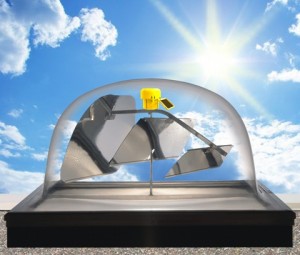The building we were touring was built in the 1950’s and the main business office was located in the very center, away from all exterior walls. The room was poorly lit with an odd assortment of flickering fluorescent bulbs, cubicle desk lamps and in-ceiling can lights. Several of the fluorescent fixtures were darkened and a distracting “hum” emanated from others. It was evident the space was in desperate need of upgrading!
Our energy team was doing an assessment of the facility in preparation for an upcoming comprehensive PACE renovation. As we mingled with the office personnel we informed them of our goal to develop energy efficient solutions and asked if there were any specific concerns with the space as it was presently being used. One person was able to describe a chief concern with this question:
“can you put windows in for us?”
Ultimately our energy team discovered many areas of the old structure were in need of energy solutions. Even though normal widows would not be possible due to the offices location, skylights in the roof were a definite possibility. In addition to providing more than adequate levels of lighting, the skylights could use the free energy of the sun to dramatically reduce the cost of lighting!
Lighting technology has changed dramatically in recent years. And as sustainability and energy efficiency gains attention, skylight technology is also undergoing a dramatic change. It even has a new classification – Active Daylighting!
While many scientific studies have proven the health and productivity benefits of natural lighting in the workplace, our client’s plea for windows tells the human side of the story. Natural light is much more pleasing than man-made lighting, and if it’s a free and renewable resource, it should be used whenever possible.

Photo Courtesy of Ciralight Global Inc.
The old version of a skylight passively let sunlight in through what was essentially an opaque window in the roof. New skylights not only let light enter but take an active role in capturing the sunlight. They can actually follow the sun and there is nothing passive about them. Although there are a wide variety of devices that can harvest sunlight some of the more impressive systems utilize a solar powered motor, in conjunction with a GPS guided complex of mirrors, to continuously stay pointed directly at the sun.
Think of a modern skylight as a periscope for a building. The angled mirrors take the light from the sun and direct it down into the enclosed space of a building.
While researching the various technologies I spoke with Jeff Brain, the president of Ciralight Global Inc. out of California. I was concerned that daylighting technology might not be as effective in northern regions when the winter sun is low on the horizon or when the device is covered with snow. His response was this:
“Northern areas don’t benefit very much from a typical Skylight. Because of our use of the mirrors we can capture the sunlight even if the sun is far to the south and using our mirrors our system drives the natural light down into the building as if the sun were directly overhead.”
And because the new active daylighting devices incorporate a dome to allow full movement of the mirrors, they act as their own greenhouse and melt accumulated snow without using any additional energy!
Some systems contain Fresnel-like devices that can actually focus and intensify the light. An amazing article details how active daylighting systems are now being used to light massive convention centers! The energy savings are HUGE!
These are exciting times when it comes to innovations in lighting technologies. Requests that would have been deemed impossible in the past now have affordable solutions. I am predicting The Energy Alliance Group will have a case study in the near future that details the amazing change which took place when natural light infused a workspace that formerly felt cut off from the sun!
Let there be light!
Superb article. No doubt the benefits to employee health, morale and productivity are significant with a switch from fluorescent to natural lighting in the work place.